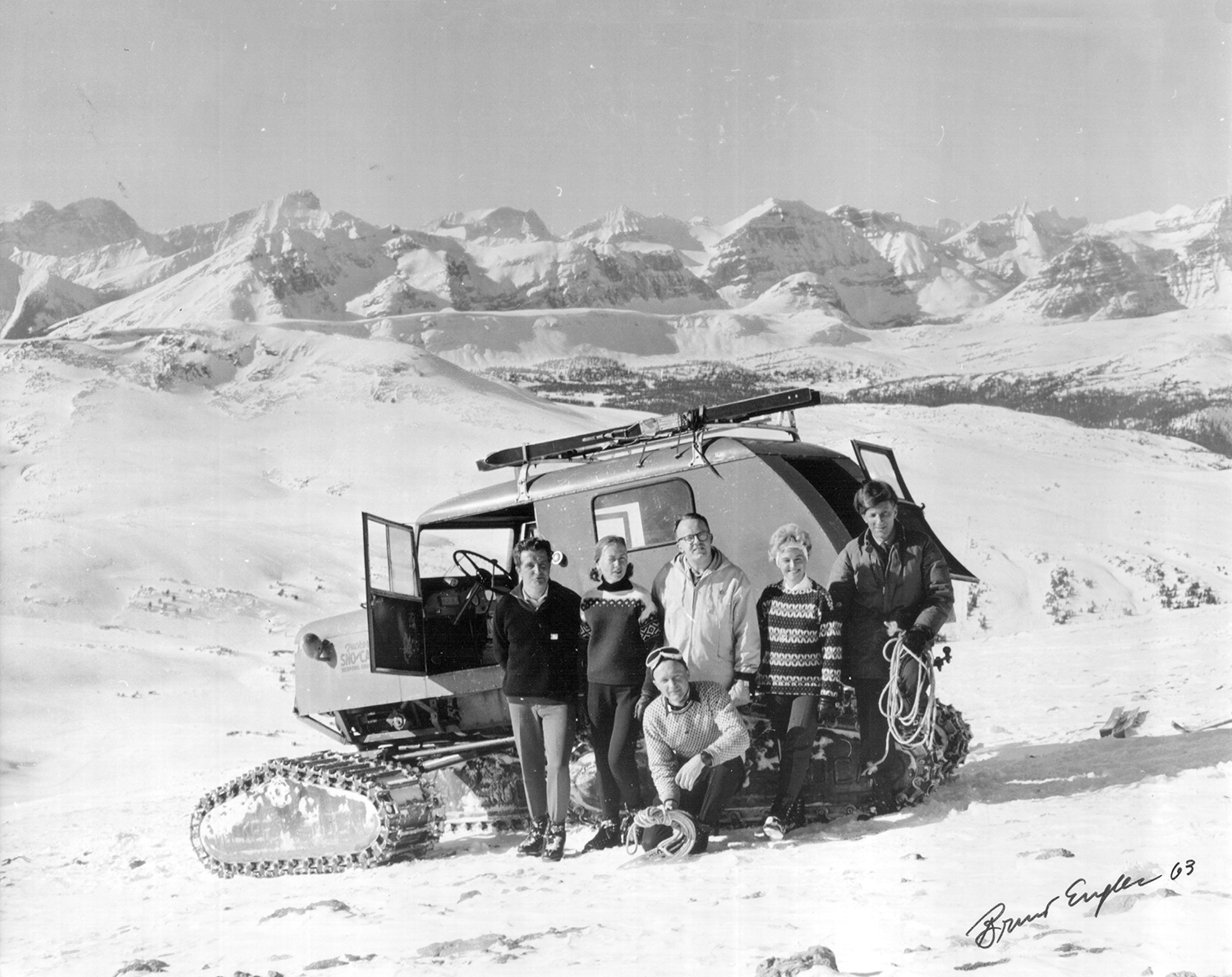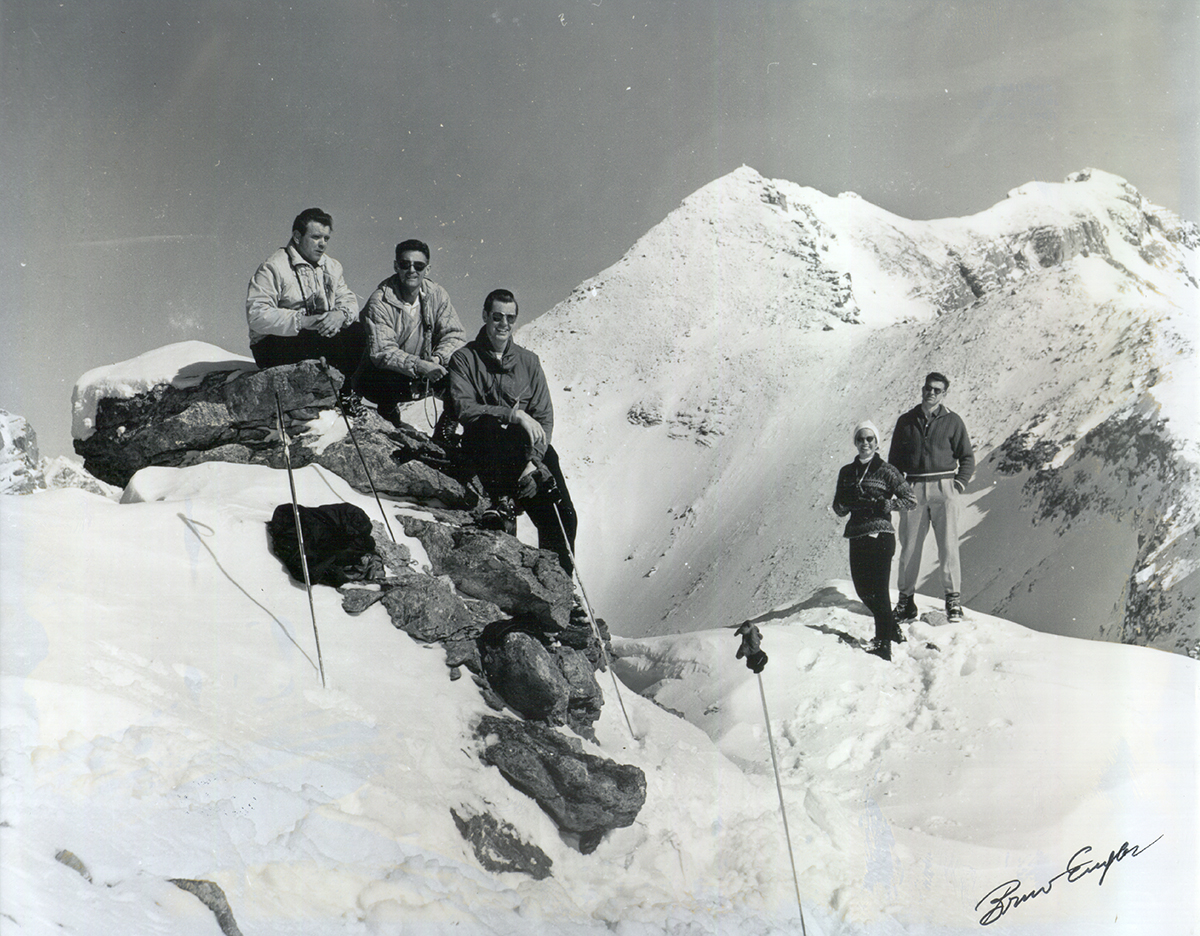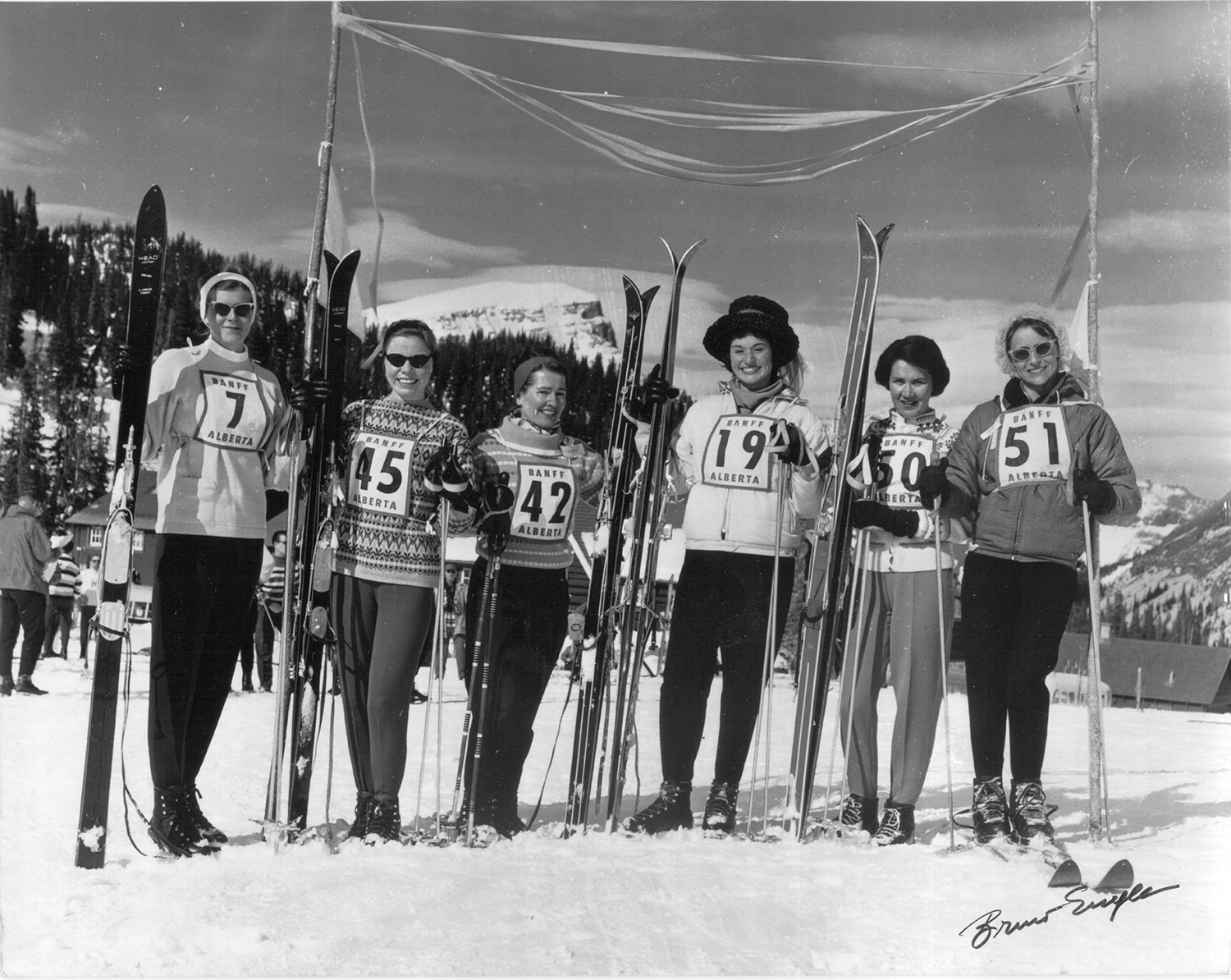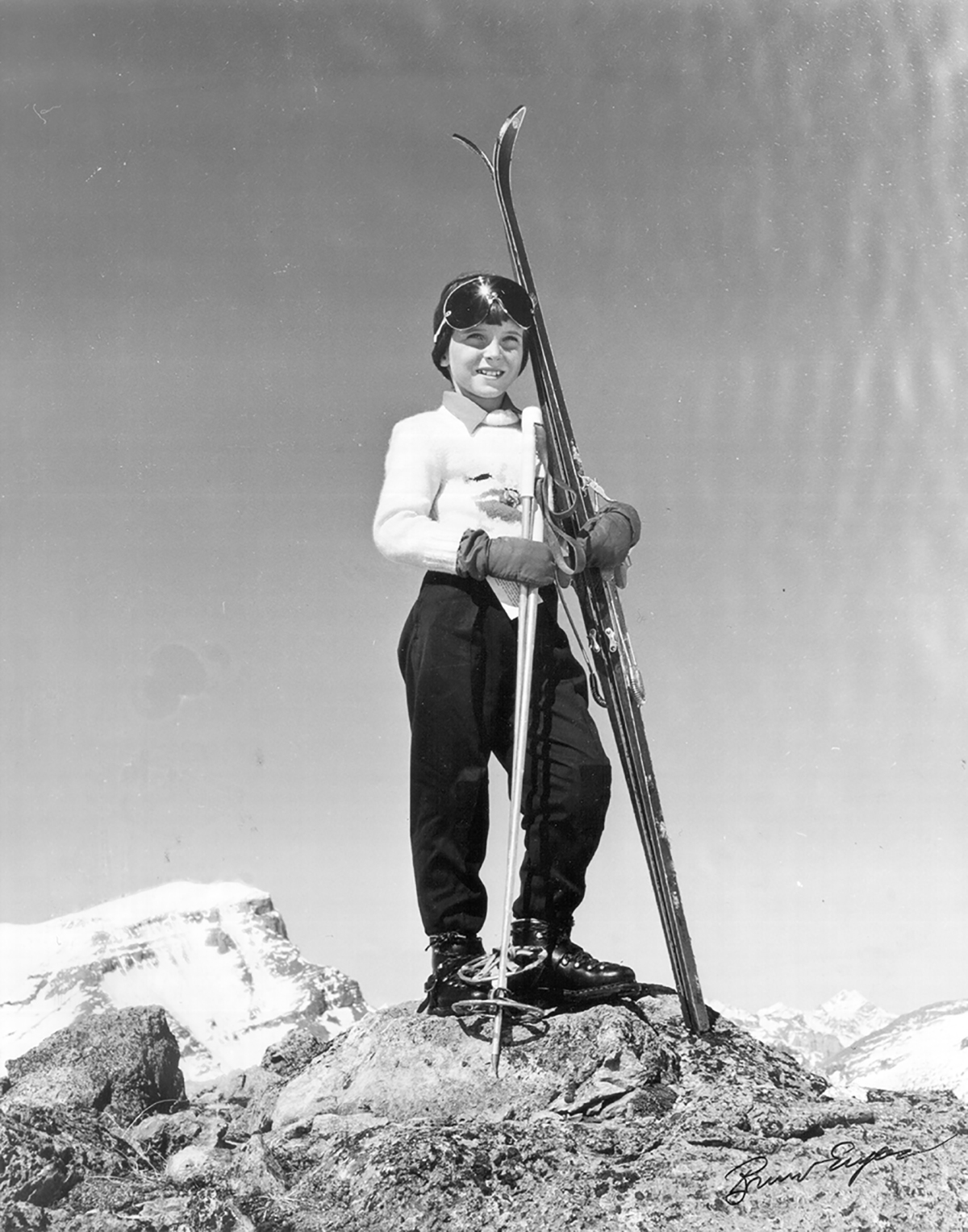Bruno Engler: The Man Behind the Lens
There is something undeniably romantic about the early days of Banff and the Canadian Rockies— the opulence of the Fairmont Banff Springs Hotel, the majesty of the rugged mountain peaks, the untouched alpine meadows, and the resilient Western way of life.
In Hollywood, the 1940s and 50s era were known as the "Golden Age," and Western Films were favorites at the box office. With directors searching for the next great western, the untamed beauty of Banff was discovered by the Hollywood elite. Banff quickly became a go-to location for the silver screen.Hollywood A-listers who filmed on location in our mountain park included Ginger Rogers in the 1930s, Mickey Rooney in the 1950s, and the iconic Marilyn Monroe.
With Banff shining on the big screen, the demand grew to capture Banff's essence—the crisp mountain air, the rugged Western charm, and the burgeoning love for skiing. During these times, one man stood out—strong, tall, and capable of capturing adventure. This man is the Banff Legend, Bruno Engler, a Swiss-born mountaineer turned photographer and filmmaker.



A Life Enchanted by the Mountains
Born in Lugano, Switzerland, in 1915, Bruno Engler inherited a love for the mountains. His early life was spent playing and skiing in the Alps. In his youth, Bruno took to the art of mountaineering and photography. His passion for the mountains inspired him to pursue a career in guiding.
Hungry for new adventures, in 1939, a then 24-year-old Bruno Engler packed up his life and embarked on a journey to explore new lands in the Canadian Rockies. Hand-picked by the Canadian Government for his expertise in mountaineering and skiing, Bruno Engler was hired to train Canadian troops for the challenges of mountainous terrain during World War II.
After the war, Bruno Engler began to embrace his artistic side. He became Sunshine's first ski instructor and mountain guide, but he was also much more than that. Bruno believed that to be a great photographer, one must be infatuated with their subject. For Bruno, his muse was the Canadian Rockies. To this day, Bruno’s portraits of Sunshine decorate our walls. His black and white photography acts as portals, inviting those who see it into a world of undeniable yet untamed beauty. In essence, they capture the very soul of the Canadian Rockies.
Bruno Engler's love for the mountains, coupled with his ambitions, led him to create "Alpine Films," a production company that would define his creative legacy. With a collection of over 25 films, Engler masterfully conveyed the enchantment of the Rockies to audiences far and wide, growing both his name and Banff’s reputation.
Engler: More than Just a Photographer
What set Engler apart as an artist was his intimate knowledge of the Canadian Rockies. He knew the peaks inside out. During the filming of "The Far Country" (1954), he warned director Anthony Mann about shooting at 3 pm due to avalanche risks. Ignored at the time, Engler was unfortunately proven right as massive amounts of snow and ice came down, endangering everyone. Engler notably saved one of the film stars' lives, earning him respect and the title "The God of the Glacier."
In a later interview, according to the Bruno Engler Fonds (Archives and Library, Whyte Museum of the Canadian Rockies), Bruno recalls overhearing the crew of the 1970s movie he was working on gossip about the legendary mountain man who saved the crew. In his interview, he chuckled to himself but kept his identity anonymous, saying, "I didn’t tell them it was me."
Committed to preserving and sharing mountain culture, Bruno Engler earned numerous accolades celebrating his contributions, including The Alberta Achievement Award for Excellence, the Premier Cup for Photography and Mountaineering, and the distinguished Rose Award. In 1975, the Association of Canadian Mountain Guides made him an honorary member.
The next time you're at Sunshine, stop by Creekside or Trapper’s to view some of Bruno Engler’s work. At Sunshine, in honor of Bruno’s legacy, we've named Bruno’s (the second floor of Trapper’s) and Engler’s (in the Wild West Freeride zone) after the one and only Bruno Engler. To learn more about the legacy of Bruno Engler and his profound impact on Canadian mountain culture, a visit to the Whyte Museum of the Canadian Rockies is a trip worth making.

